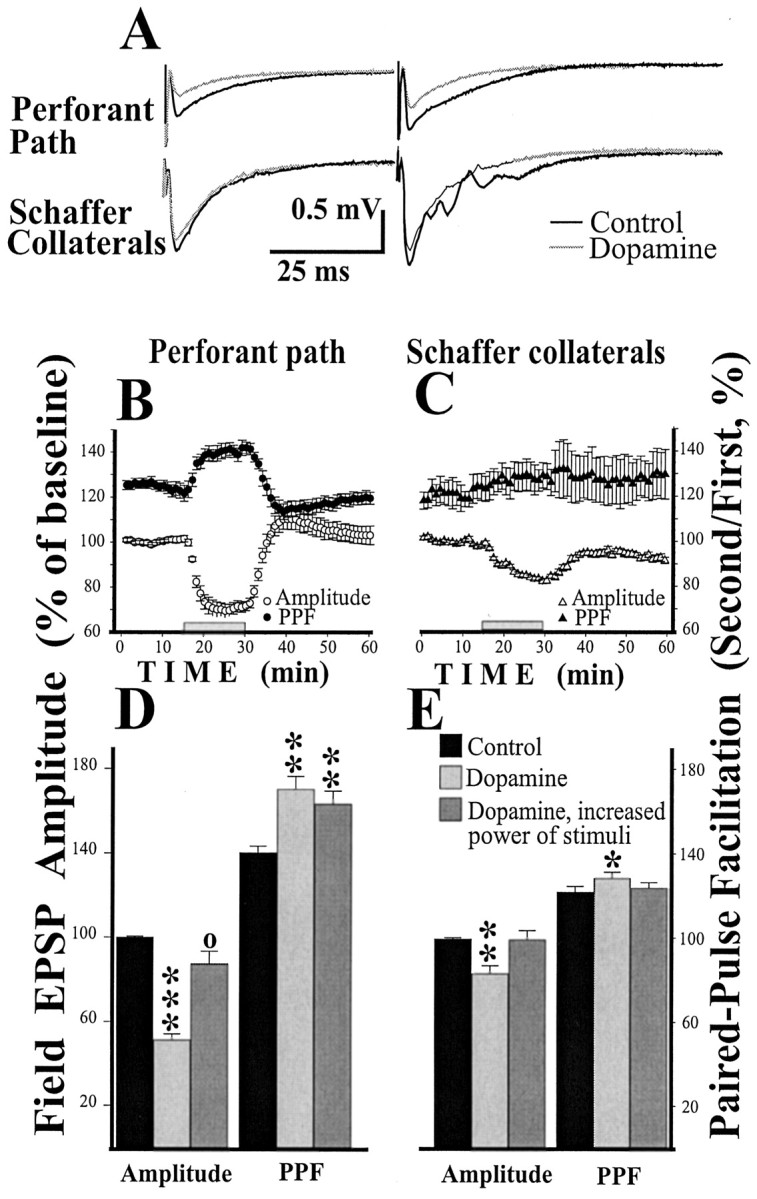Fig. 4.

Dopamine significantly increased paired-pulse facilitation in the pp input. A, Individual examples of fEPSP during paired-pulse stimulation. All experiments were done in normal Mg2+ ACSF with 50 μmpicrotoxin added. B, Changes in fEPSP amplitude and PPF of amplitude during dopamine application in the pp. C, Changes in the fEPSP amplitude and PPF in the sc. Apparent failure of reversal in amplitude during the washout of dopamine is probably caused by the small, slow decline of responses (∼10%/hr) generally seen in the sc input during picrotoxin applications. Time of dopamine applications is marked by rectangles. D, Increase of power of stimuli during dopamine application does not affect PPF of the pp fEPSP amplitude. E, Increase of power of stimuli during dopamine application decreases PPF of the sc fEPSP amplitude back to the baseline level. Pathway labels forB and C also refer to Dand E. The dopamine effect (second column) was estimated between 5 and 10 min of dopamine application relative to the baseline before application. Third columns represent measurement between 5 and 10 min after the increase in power of stimuli in the presence of dopamine. Significance relative to baseline in paired ttest: ○p < 0.1; *p < 0.05; **p < 0.01; ***p < 0.001.
